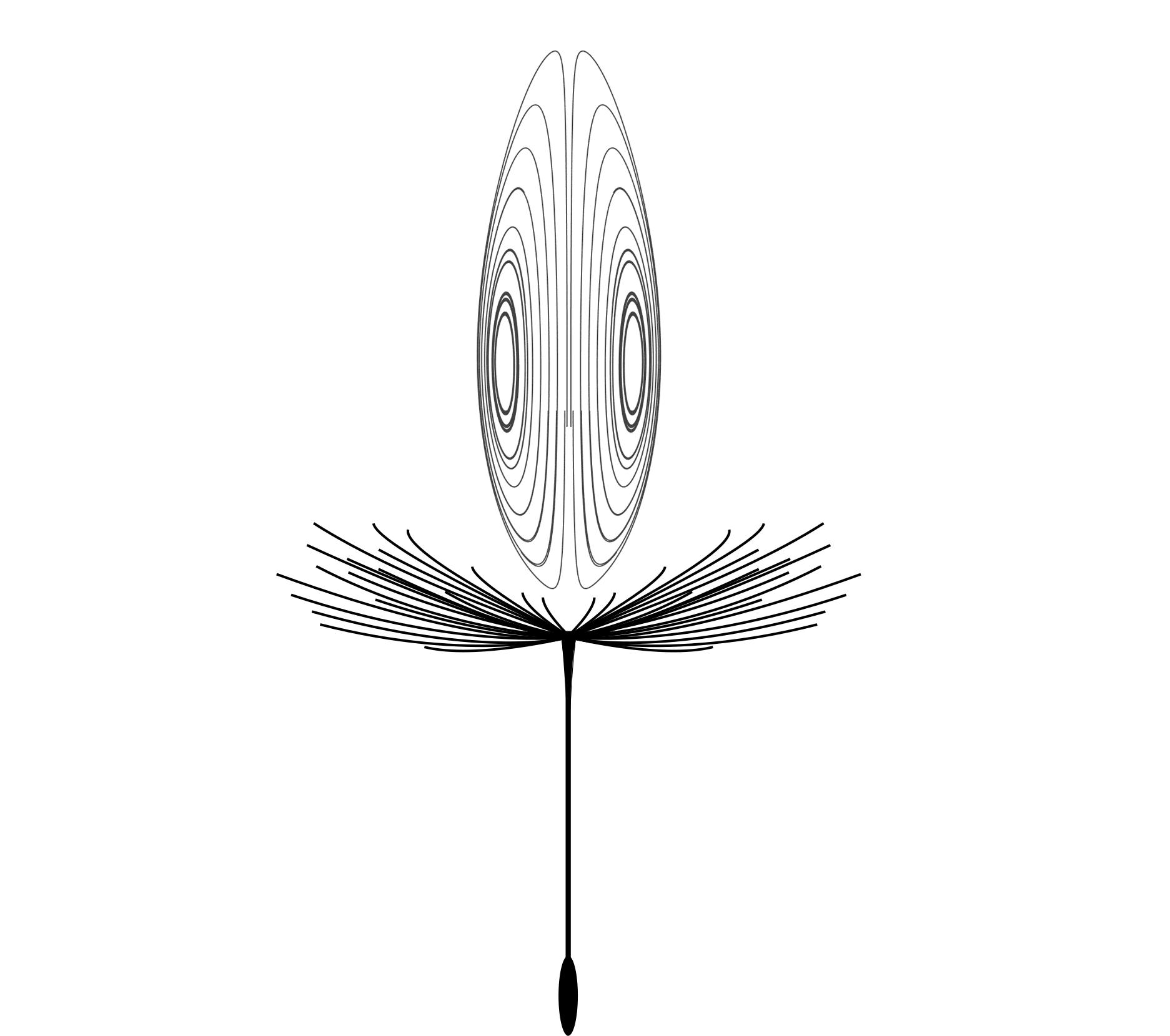EPFL scientists, working in association with colleagues at the University of Twente and the University of Pisa, have studied the link between the number of bristles on dandelion seeds and the ability of those seeds to travel long distances in a stable manner.
Humans went to great lengths to design airplanes that can fly stably at cruising speed. But some biological objects - like dandelion seeds - have evolved to do that naturally over several kilometers.
In 2018, scientists at the University of Edinburgh took a close look at dandelion seeds, and more specifically at how they are able to disperse over large distances. The research team found that as the seeds float through the air, a stable, detached ring of circulating fluid - called a vortex ring - forms underneath the seeds' pappus (the disk-shaped collection of white bristles that acts like a parachute), and keeps the seeds aloft. Their findings have been published in Nature.

Diagram of the vortex ring that forms underneath a pappus, allowing dandelion seeds to travel several kilometers. © Pier Giuseppe Ledda
Around 100 bristles for optimal flight
Scientists at EPFL's Laboratory of Fluid Mechanics and Instabilities (LFMI, within the School of Engineering), working in association with colleagues at the University of Pisa and the University of Twente, recently took this research one step further.
They first developed a mathematical model that can simulate the flow dynamics around the pappus as it moves through the air, thereby replicating the vortex ring.
Then they studied how well the seeds are able to withstand minor air turbulence - and found that the number of bristles plays an important role. "It's a critical factor in flight stability," says Pier Giuseppe Ledda, a PhD student at LFMI and lead author of the study. "Our model calculated that the maximum number of bristles for stable flight is around 100, and surprisingly, that's approximately how many bristles the seeds naturally contain." Their research appears in Physical Review Fluids.
A steady trajectory with ideal drag
According to François Gallaire, an LFMI professor and a coauthor of the study: "Two things need to happen for an object to be able to travel long distances through the air. First, its trajectory needs to be as steady as possible. And second, its drag - that is, the force that the air exerts on the object in the opposite direction of its motion - has to be large enough. For a pappus carrying a dandelion seed, even a slight upwards breeze can create enough drag to overcome the seed's weight and allow it to fly."
The scientists found that having around 100 bristles optimizes these two factors. "Any more and the vortex ring would be too big, which would create more drag but also generate an unstable flight. Any less and the vortex ring would be too small, which would provide good stability but not enough drag," says Ledda.
Applications inspired by nature
This process of modeling the mechanisms that occur in nature forms the basis of a field known as biomimetics. "Our research could be extended to analyze how playing with an object's porosity affects its propulsion and the stability of its trajectory. That could have applications in a number of high-tech areas," says Simone Camarri, a professor at the University of Pisa's Department of Civil and Industrial Engineering and another coauthor of the study. These findings could be used with objects designed to work like a parachute, especially those of a similar size and weight as dandelion seeds.






